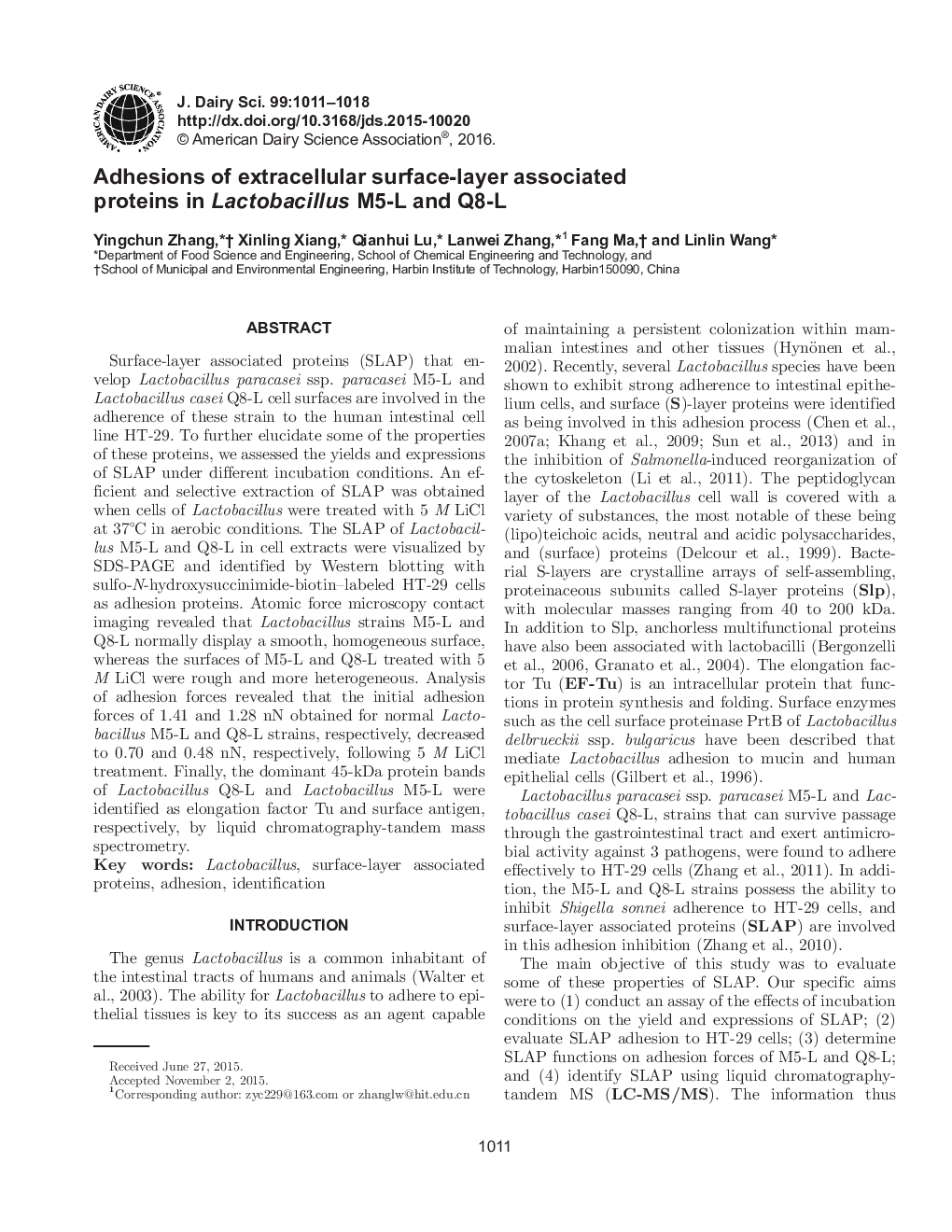| Article ID | Journal | Published Year | Pages | File Type |
|---|---|---|---|---|
| 10973535 | Journal of Dairy Science | 2016 | 8 Pages |
Abstract
Surface-layer associated proteins (SLAP) that envelop Lactobacillus paracasei ssp. paracasei M5-L and Lactobacillus casei Q8-L cell surfaces are involved in the adherence of these strain to the human intestinal cell line HT-29. To further elucidate some of the properties of these proteins, we assessed the yields and expressions of SLAP under different incubation conditions. An efficient and selective extraction of SLAP was obtained when cells of Lactobacillus were treated with 5 M LiCl at 37°C in aerobic conditions. The SLAP of Lactobacillus M5-L and Q8-L in cell extracts were visualized by SDS-PAGE and identified by Western blotting with sulfo-N-hydroxysuccinimide-biotin-labeled HT-29 cells as adhesion proteins. Atomic force microscopy contact imaging revealed that Lactobacillus strains M5-L and Q8-L normally display a smooth, homogeneous surface, whereas the surfaces of M5-L and Q8-L treated with 5 M LiCl were rough and more heterogeneous. Analysis of adhesion forces revealed that the initial adhesion forces of 1.41 and 1.28 nN obtained for normal Lactobacillus M5-L and Q8-L strains, respectively, decreased to 0.70 and 0.48 nN, respectively, following 5 M LiCl treatment. Finally, the dominant 45-kDa protein bands of Lactobacillus Q8-L and Lactobacillus M5-L were identified as elongation factor Tu and surface antigen, respectively, by liquid chromatography-tandem mass spectrometry.
Keywords
Related Topics
Life Sciences
Agricultural and Biological Sciences
Animal Science and Zoology
Authors
Yingchun Zhang, Xinling Xiang, Qianhui Lu, Lanwei Zhang, Fang Ma, Linlin Wang,
